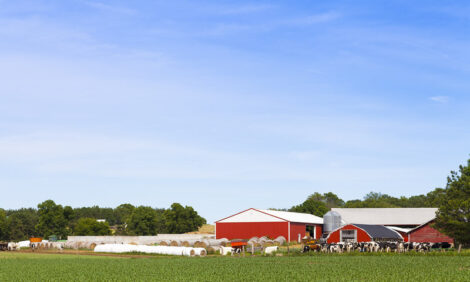



Grazing Soybean in a Pasture-based Automatic Milking System
Soybean as a pasture forage is being investigated by Ajantha Horadagoda of FutureDairy finding that intake was double that of normal pasture grass but consumption rates were similar, writes Dr David Clark of Sydney University.The ability to grow 25tDM/ha/yr in conventional milking system through incorporating a complementary forage rotation on 30% of the milking platform has been highlighted previously by FutureDairy. Those results far exceeded the average Australian dairy farm pasture yield of 7-8tDM/ha/yr and indicated clear opportunities to incorporate alternative forages into automatic milking systems (AMS) to reduce the average distance of feed from the dairy.
However, the impact of offering alternative forages on cow traffic in AMS is largely unknown. In a cow preference study, led by Ajantha Horadagoda of FutureDairy, cows grazed soybean for a significantly greater time (approximately 70%) than alternative forages such as cowpeas and lablab.
This work highlighted cow preference for certain forages and the opportunity to utilise the preference for certain forages to modify cow behaviour in a commercial setting.
Therefore, the aim of this experiment was to investigate the impact on cow traffic when one allocation of pasture is replaced with soybean in an AMS grazing system, with the hypothesis that incorporating soybean would increase cow traffic from the stale pasture allocation and thereby increase milk production.
Despite the previously shown dairy cow preference for legumes, voluntary cow traffic was not increased by offering soybean and intake rates were similar to pasture in the current study.
However, dairy cows offered soybean had approximately double the intake as compared with pasture, however, the rate at which soybean and pasture was consumed was similar.
The greater soybean intake was subsequently due to cows grazing for a longer period of time, possibly due to the tendency and time required for cows to select out soybean leaf before grazing the stems. These findings indicate that high nutritive value alternative forages with less distinction between stem and leaf may be required to increase dairy cow intake rates for future AMS farms.

Forages such as chicory or forage rape would be potential species to evaluate. Whilst these alternative forages may help increase intake, intake rate and the amount of feed grown, it is unlikely that any alternative forage would increase cow traffic from a stale pasture allocation as soybean is a type of forage with very high cow preference.
For further information please contact Dr Cameron Clark at [email protected]
January 2013


